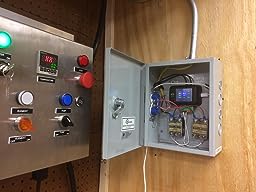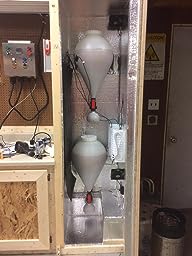TANSTAAFB
Well-Known Member
Hello All, I have been brewing for about 8 years, AG almost the entire time. I switched to BIAB a couple of years ago and love it. I have a pretty jacked up back so minimizing lifting is a priority. I would also like the capacity to brew indoors. The Robobrew is pretty appealing for a turnkey, simple setup but the $500 made me consider what else I could do for a similar price. So I headed down the rabbit hole! Now I need some help understanding the options.
One route would be a 240v induction cooktop like the Avantco ic3500. I have an induction ready 10gal kettle but it's small for the size batches and recipes I prefer to make. So I started looking at Spike kettles and saw the triclover element option. But then I need a controller which adds cost.
I'd like to keep things as simple as possible. I already have a chugger pump and a plate chiller, but I tend not to use them because it's just easier to use my IC and gravity with less to clean. I may eventually upgrade to a Jaded Hydra, but for now my priority is coming up with a system that allows me to brew 6-10 gallon batches, BIAB, indoors, with as much simplicity as possible. I would also like to explore 120v vs 240v options. Right now 240v is NOT an option but we will be moving soon so it could be. However, I might need to start with a less than ideal 120v setup that I can upgrade to 240v but I don't want to buy redundant equipment. I already have a metric f@$&ton of stuff that I'll sell when I settle on a design.
After all that rambling I'd love a discussion on the pros and cons of various setups including functionality, cost, ease of cleanup and maintenance, etc. Slainte!
One route would be a 240v induction cooktop like the Avantco ic3500. I have an induction ready 10gal kettle but it's small for the size batches and recipes I prefer to make. So I started looking at Spike kettles and saw the triclover element option. But then I need a controller which adds cost.
I'd like to keep things as simple as possible. I already have a chugger pump and a plate chiller, but I tend not to use them because it's just easier to use my IC and gravity with less to clean. I may eventually upgrade to a Jaded Hydra, but for now my priority is coming up with a system that allows me to brew 6-10 gallon batches, BIAB, indoors, with as much simplicity as possible. I would also like to explore 120v vs 240v options. Right now 240v is NOT an option but we will be moving soon so it could be. However, I might need to start with a less than ideal 120v setup that I can upgrade to 240v but I don't want to buy redundant equipment. I already have a metric f@$&ton of stuff that I'll sell when I settle on a design.
After all that rambling I'd love a discussion on the pros and cons of various setups including functionality, cost, ease of cleanup and maintenance, etc. Slainte!




